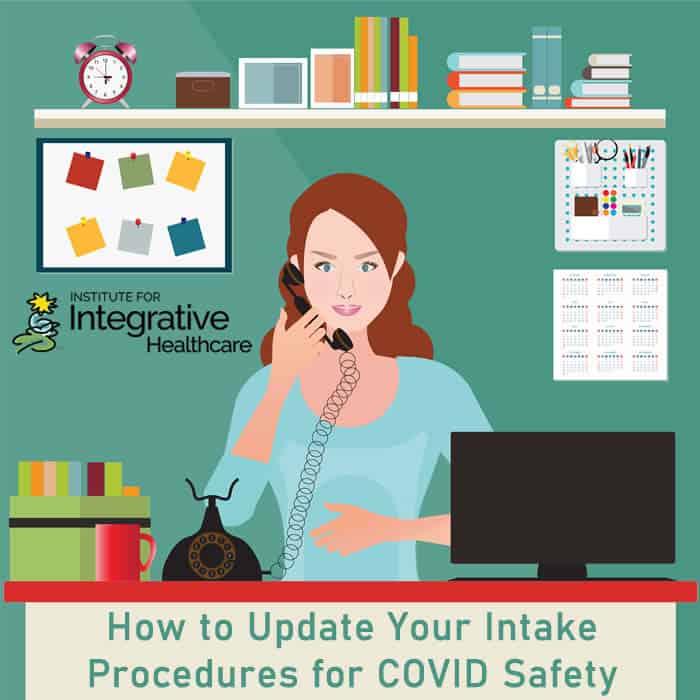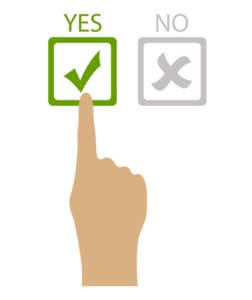

The COVID-19 pandemic has fundamentally changed our approach to health and safety. It’s absolutely essential for massage therapists to take precautions that will prevent the spread of the virus. These guidelines may impact every aspect of your practice, from the number of clients you see in a day to how you organize your space. One important way to keep yourself and your clients safe is by updating your intake process.
Clear Communication is Key
When a client comes in for a massage, they have certain expectations. If they’re surprised by your newly implemented precautions, they might have a hard time settling in. Because of this, it’s best to speak with every client in advance of their first session to let them know what to expect.
Here’s a quick list of details to share:
- Masking Policy: How you’ll behave and what you expect from clients.
- On-site COVID-19 Assessment: Whether you plan to take their temperature or ask screening questions when they arrive.
- Your Own Protocols: Share details about your studio’s hygiene practices, ventilation, number of clients you see in a day, etc.
By communicating clearly and answering their questions, you let clients know that you’re taking their safety very seriously. This is not only a public health issue; it’s also an excellent marketing strategy.
Depending on your client base, you may encounter people who are unwilling to abide by your stated ground rules. Some clients may refuse to wear a mask or even be offended that you ask them to. Therapists should maintain a respectful and professional tone with everyone, whether or not you agree with their opinions.
However, for the safety of yourself and your other clients, it’s important to maintain strong boundaries around what behavior you will and will not accept. If you encounter this kind of resistance, simply explain that you understand the person’s perspective, but you cannot accommodate their needs at this time.
Pre-Appointment Screening for COVID-19 Exposure
The day before the session, you or someone from your practice should call each client to ask pre-screening questions. The American Medical Association recommends using the following script to determine a client’s risk of exposure to COVID-19 (1):
- Have you or anyone in your household had any of the following symptoms in the last 21 days: sore throat, cough, chills, body aches for unknown reasons, shortness of breath for unknown reasons, loss of smell, loss of taste, fever at or greater than 100 degrees Fahrenheit?
- Have you or anyone in your household been tested for COVID-19?
- Have you or anyone in your household visited or received treatment in a hospital, nursing home, long-term care, or other health care facility in the past 30 days?
- Have you or anyone in your household traveled in the U.S. in the past 21 days?
- Have you or anyone in your household traveled on a cruise ship in the last 21 days?
- Are you or anyone in your household a health care provider or emergency responder?
- Have you or anyone in your household cared for an individual who is in quarantine or is a presumptive positive or has tested positive for COVID-19?
- Do you have any reason to believe you or anyone in your household has been exposed to or acquired COVID-19?
- To the best of your knowledge have you been in close proximity to any individual who tested positive for COVID-19?
If They Answer Yes

If they answer yes to any of these questions, you should have the client reschedule for a later date. Clients who have been exposed to COVID-19 are advised to quarantine for 14 days (2). In this situation, approach the conversation as the client’s ally. They should not be chastised for taking risks, and you should not project a sense of anxiety. You may even offer suggestions for self-care while they wait for test results, such as simple stretches or remembering to drink enough water. Let the client know that their health is your first priority and that you look forward to seeing them once it’s safe to do so. If possible, reschedule the appointment before getting off the phone.
Updating Your Intake Procedures
Whether someone is coming to you for the first time or returning after an absence, it’s likely that they have experienced unique stressors in the past year. A client you once treated for a sports injury may now have muscle weakness from a sedentary lifestyle. Someone who used to have foot pain from working as a server may now present with anterior head posture from spending too much time on a computer. Perform a thorough assessment of each client, including those you’ve seen many times before.
In addition to physical changes, most people have undergone extreme psychological stress since March of 2020. Their experience may or may not be relevant to your work, so it’s important to ask questions that are compassionate but open-ended. Give them the space to answer with as much or as little detail as they like.
Some Appropriate Questions Might Include
- How did your daily physical routine change in the past year?
- How is your work space set up now? Do you find it physically comfortable?
- When you wake up in the morning, do you usually feel rested?
- What self-care strategies have you been using lately?
- Are there parts of your current routine that you’d like to change?
While massage therapists are not trained to provide talk therapy, your clients may still see you as a source of support. The information they provide, and their body language while they share it with you, will give you valuable insights about their health.
Ongoing Care and Connection
We are living through a time of great upheaval. Your clients are craving safety, stability, and human connection. Massage therapy can provide all of these things. Updating your intake procedures and hygiene protocols will make them feel safe in your care. Setting clear expectations with each client lets them know they can rely on you. Most importantly, being emotionally present in every session allows them to connect with you and with their own body. These new protocols are not meant to detract from the experience of massage. Instead, they are tools you can use to create a safe space for each person’s healing process.











